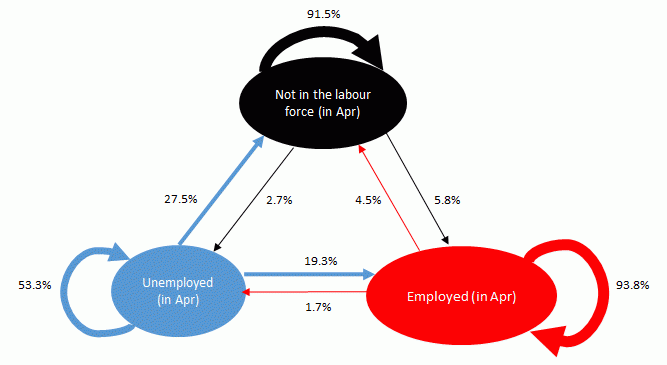Across April, May and early June, Australia experienced unprecedented interventions in the labour market, which included restrictions to slow the spread of COVID-19 and government support packages to mitigate its impact on individuals, households and businesses.
A large number of people had their hours reduced or were stood down in April, as social distancing and other business restrictions came into effect. These conditions continued into May, with social distancing rules impacting work and job search activities, while changes to schooling arrangements may have reduced people’s availability for work, or ability to look for work.
By June, some of the social distancing and business restrictions had started to be progressively relaxed or lifted, while JobSeeker mutual obligations also started to be reinstated on a limited basis.
The impacts of these recent changes are evident in key labour force estimates for June, with seasonally adjusted employment increasing by 210,800 people between May and June after falling by 874,700 between March and May. There was also a corresponding rise in the employment-to-population ratio (up 1.0 pts to 59.2%) and a 4.0% increase in hours worked.
The seasonally adjusted underemployment rate decreased by 1.4 pts to 11.7%, reflecting a large reduction in the number of full-time workers who worked less than 35 hours for economic reasons between May and June (232,600, in original terms).
The seasonally adjusted participation rate also rose (up 1.3 pts to 64.0%). While most of this increase was attributable to the increase in employment, the unemployment rate also rose, by 0.4 pts to 7.4%, following the 1.0 point rise between April and May. The number of unemployed people increased by 69,300 to just under 1 million (992,300).
The increase in unemployment reflects a large movement from not in the labour force to unemployment between May and June, meaning the increase in unemployment is largely the result of people moving back into the labour force, rather than people losing their job. By contrast, the increase in unemployment in April largely reflected movements from employment into unemployment.

